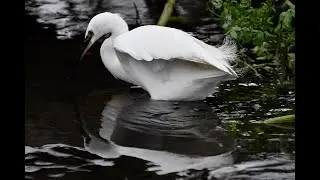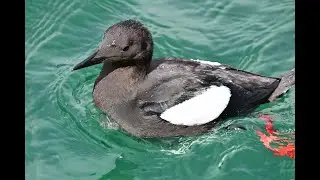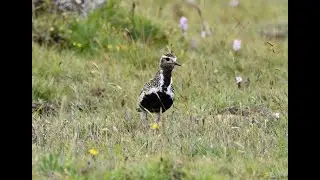Guillemots or Common Murres Uria aalge at Noss and Sumburgh Head, Shetland
Guillemots or Common Murres Uria aalge nest colonially on rather unwelcoming rocks and cliffs, and a clever ploy is used in order to prevent (most of) their eggs from being dislodged from narrow ledges as they are shaped so that they will spin rather than roll away if knocked or blown during the stormy weather that they are frequently exposed to. These colonies are, to say the least, noisy places! One of their most significant predators, a Great Black-backed Gull Larus marinus, is shown in some of the still photographs, and the body-language of the Guillemot immediately underneath this marauder is all too evident. Northern colonies like the ones at Noss and Sumburgh Head on Shetland contain a relatively high proportion of the attractive 'bridled' form of this species, in which one could be forgiven for believing that the birds are wearing spectacles when they are in their summer plumage! In common with other auks, these are long-lived birds, with just a single chick being produced each year once they are old enough to breed. Most of their lives are spent out at sea. The birds dive underwater to feed, using their wings to assist with propulsion.



















